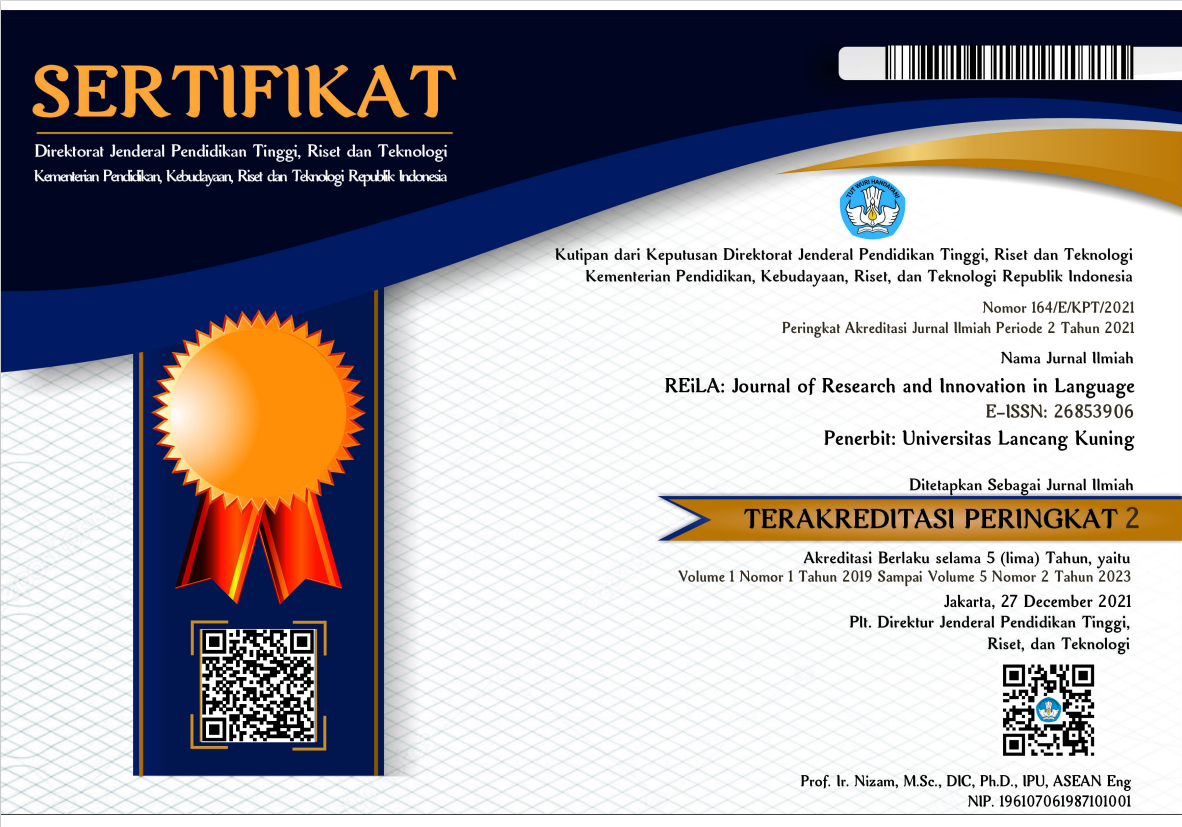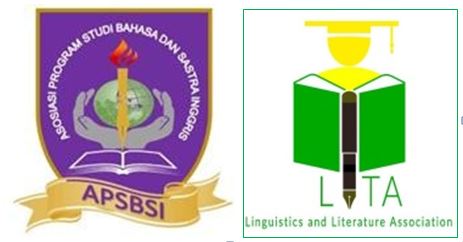Computer-assisted Language Learning in Pakistani Context During COVID-19 Pandemic
Abstract
The use of technology and contemporary methodologies has resulted in significant changes in the development and enhancement of education standards in the higher education system in the last decade. The pandemic of the Corona Virus (Covid-19) has had an impact on many sectors of life across the world, including economy, vocations, culture, schooling, etc. For the protection of students, most schools and institutions have been closed. Then, in order to keep education continuing, many schools and institutions turned to e-learning. However, in Pakistan, many lecturers/teachers and students are still unfamiliar with this teaching/learning method. This research study planned for investigating two Pakistani context universities, i.e., Mehran University of Engineering and Technology and University of Sindh's ESL on their teachers' attitude towards implementing and using CALL in their English language teaching, their present employments of CALL applications in their teaching and challenges they experience while executing CALL in their teaching to get a general picture of CALL usage in this particular setting. Data was collected through a teacher-based survey questionnaire webbed to 40 EFL teachers (n=40), and then it was analysed by SPSS. The questionnaire consisted of five-Likert items. Each item of the question consisted of sub-items and elements with the help of those elements which the researchers got an accurate picture of answers for their research questions. Findings revealed that ESL teachers of the concerned universities held positive perspectives towards utilising CALL in their teaching of English, and there were no noteworthy contrasts in teachers' perspectives that can be credited to gender or academic levels. They saw CALL as a facilitating tool in encouraging language learning, increasing their motivation level, and helping them acquire skills.
Downloads
References
AbuSeileek, A. F. (2011). Hypermedia annotation presentation: The effect of location and type on the EFL learners’ achievement in reading comprehension and vocabulary acquisition. Computers & Education, 57(1), 1281-1291.
AbuSeileek, A. F. (2012). The effect of computer-assisted cooperative learning methods and group size on the EFL learners’ achievement in communication skills. Computers & Education, 58(1), 231-239.
Ahmadishokouh, A. A., & Samadi, F. (2021). The Differences between English and Russian Language Teachers' Attitudes towards CALL. International Journal of Multicultural and Multireligious Understanding, 8(10), 147-155.
Ahmed, S. T. S., Qasem, B. T., & Pawar, S. V. (2020). Computer-Assisted Language Instruction in South Yemeni Context: A Study of Teachers' Attitudes, ICT Uses and Challenges. International Journal of Language Education, 4(1), 59-73.
Al-Asmari, A. M., & Khan, M. S. R. (2014). E-learning in Saudi Arabia: Past, present and future. Near and Middle Eastern Journal of Research in Education, 2014(1), 2.
Albirini, A. (2006). Teachers’ attitudes toward information and communication technologies: The case of Syrian EFL teachers. Computers & Education, 47(4), 373-398.
Ali, M., & Yacob, N. (2010, May). Computer vocabulary look-up behaviour of three adult university students with different English language abilities. In Global Learn (pp. 3355-3364). Association for the Advancement of Computing in Education (AACE).
Alkahtani, S. A. (2011). EFL female faculty members’ beliefs about CALL use and integration in EFL instruction: The case of Saudi higher education. Journal of King Saud University-Languages and Translation, 23(2), 87-98.
Al-Mansour, N. S. (2012). The effect of computer-assisted instruction on Saudi University students’ learning of English. Journal of King Saud University-Languages and Translation, 24(1), 51-56.
Alsied, S. M., & Pathan, M. M. (2013). The use of computer technology in EFL classroom: Advantages and implications. International Journal of English Language & Translation Studies (IJ-ELTS), 1(1), 61-71.
Aziz, A.A., Hassan, M.U., and Dzakiria, H. (2018). Growing Trends of Using Mobile in English Language Learning. Mediterranean Journal of Social Sciences, 9(4), 235-239
Beatty, K. (2013). Teaching & researching: Computer-assisted language learning. Routledge.
CakirCakir, I. (2006). The use of video as an audio-visual material in foreign language teaching classroom. Turkish Online Journal of Educational Technology-TOJET, 5(4), 67-72.
Chow, P., & Ge, V. (2011). Multimedia English classroom. Puli, Taiwan: National Chi Nan University Publications
Dhawan, S. (2020). Online learning: A panacea in the time of COVID-19 crisis. Journal of Educational Technology Systems, 49(1), 5-22.
Djamarah, S.B. (2011). Psikologi Belajar. Jakarta: Rineka Cipta.
Edwards-Groves, C. (2012). Interactive creative technologies: Changing learning practices and pedagogies in the writing classroom. Australian Journal of Language and Literacy, Vol. 35(1), 99-113.
Ercetin, G. (2010). Effects of topic interest and prior knowledge on text recall and annotation use in reading a hypermedia text in the L2.ReCALL,22, pp 228-246.
Farooq, M.U. & Soomro, A.F. (2018). Teachers and Computer technology: Trends in English Language Teaching in Saudi Arabia. International Journal of English Linguistics, Vol. 8(5), 10-19.
Gilakjani, A. P., & Leong, L. M. (2012). EFL Teachers" Attitudes toward Using Computer Technology in English Language Teaching. Theory & Practice in Language Studies, 2(3), 360-365
Golonka, E. M., Bowles, A. R., Frank, V. M., Richardson, D. L., & Freynik, S. (2014). Technologies for foreign language learning: A review of technology types and their effectiveness. Computer assisted language learning, 27(1), 70-105.
Guan, N., Song, J., & Li, D. (2018). On the advantages of computer multimedia-aided English teaching. Procedia computer science, Vol.131, 727-732. https://doi.org/10.1016/j.procs.2018.04.317
Haider, A. G. (2013). Perceptions of ESL Teachers towards Use of Computer-Assisted Language Instruction Technique Implications for ELT (English Language Teaching) at the Intermediate Level-A Case Study. Researchgate. net Publication, 13 (8), 204-237.
Hassan, M.U. and Dzakiria, H. (2019). The University Students’ Beliefs towards Corrective Feedback in Learning English as Foreign Language in Pakistan. International Journal of Recent Technology and Engineering, 8 (3), 4094-4100.
Hassan, M.U. and Dzakiria, H. (2020). Students' beliefs towards written CF and their impact on writing accuracy in EFL class: A Pakistani EFL context. International Journal of Advanced Science and Technology, 29 (6-S), 648-658
Hassan, T.U. & Sajid, A.R. (2013). Computer-Assisted Language Instructions in learning: problems faced by Pakistan. Journal of Research and Reflections in Education, 7 (1), 52-64.
Hu, Z., & McGrath, I. (2011). Innovation in higher education in China: Are teachers ready to integrate ICT in English language teaching?. Technology, pedagogy and education, 20(1), 41-59.
Irshad, S., & Ghani, M. (2015). Benefits of CALL in ESL pedagogy in Pakistan: A case study. ELF Annual Research Journal, 17, 01-22.
Jamal, U. U. Jamal, (2020) What does the rise of online learning during COVID-19 mean for Southeast Asia? https://www.aseantoday.com/2020/08/what-does-the-rise-of-online-learning-during-covid-19-mean-for-southeast-asia/.
Kaid Mohammed Ali, J., & Rashad Ali Bin-Hady, W. (2019). A study of EFL students' attitudes, motivation and anxiety towards WhatsApp as a language learning tool. Arab World English Journal (AWEJ) Special Issue on CALL, 5. 289-298, https://dx.doi.org/10.2139/ssrn.3431782
Khawaji, S. A. N. (2016). English Teacher’s Perception and Practices towards Technology Implementation. International Journal, 4(2), 123-133. https://web.archive.org/web/20180721142853id_/http://ijll
Kilickaya, F., & Krajka, J. (2010). Comparative usefulness of online and traditional vocabulary learning. Turkish Online Journal of Educational Technology-TOJET, 9(2), 55-6
Kuru Gönen, S. İ. (2019). A qualitative study on a situated experience of technology integration: Reflections from pre-service teachers and students. Computer Assisted Language Learning, 32(3), 163-189.
Lai, C., Yeung, Y., & Hu, J. (2016). University student and teacher perceptions of teacher roles in promoting autonomous language learning with technology outside the classroom. Computer Assisted Language Learning, 29(4), 703-723.
Lodhi, M.A, Fatima, A., Ismail, F., Amin, N., Khalid, F., & Siddiqa, A (2019). Attitude of Male and Female Students Towards Computer Assisted Language Learning at Intermediate Level. English Language Teaching, 12 (3),108-118. https://eric.ed.gov/?id=EJ1205628
Machnaik, J. (2012). Investigating the effect(s) of computer technology integration on teaching practices that may lead to the development of a community of learners [Electronic version]. Saskatoon, SK, Canada: University of Saskatchewan. http:// www. usask. ca/ education/coursework/802papers/machnaik.
Mahdi, H. S. (2013). Issues of computer-assisted learning Normalisation in EFL Contexts. International Journal of Linguistics, 5 (1), 191-203
Naeini, J., & Duvall, E. (2012). Dynamic assessment and the impact on English language learners' reading comprehension performance. Language Testing in Asia, 2(2), 1-20.
Nami, F., Marandi, S. S., & Sotoudehnama, E. (2016). CALL teacher professional growth through lesson study practice:an investigation into EFL teachers' perceptions. Computer Assisted Language Learning, 29(4), 658-682. https://doi.org/10.1080/09588221.2015.1016439
Pham, H. H., & Ho, T. T. H. (2020). Toward a ‘new normal with e-learning in Vietnamese higher education during the post COVID-19 pandemic. Higher Education Research & Development, 39(7), 1327-1331.
Pham, V. P. H., & Vo, N. D. T. (2021, March). CALL in Asia during Covid-19 and Models of E-learning. In Proceedings of the 17th International Conference of the Asia Association of Computer-Assisted Language Learning (AsiaCALL 2021) (Vol. 533, pp. 1-10).
Hayashi, R., Garcia, M., & Maddawin, A. (2020). Online Learning in Sri Lanka’s Higher Education Institutions during the COVID-19 Pandemic. Asian Development Bank.
Rachid, S., Cunningham, U., Watson, K., & Howard, J. (2018). Revisiting the digital divide (s): Technology-enhanced English language practices at a university in Pakistan. UC Research Repository https://ir.canterbury.ac.nz/handle/10092/16079
Rahman, D. "A reckoning for online learning in times of crisis," The Star. https://www.thestar.com.my/opinion/columnists/whats-your-status/2020/03/24/a-reckoning-for-online-learning-in-times-of-crisis
Rashid, S. (2017). Computer Assisted Language Learning in Pakistan: Teachers' Perspectives. Journal of Asia TEFL, 14(4), 802-808
Saglam, A. L. G., & Sert, S. (2012). Perceptions of in-service teachers regarding technology integrated English language teaching. Turkish Online Journal of Qualitative Inquiry, 3(3), 1-14.
Singh K, Srivastav S, Bhardwaj A, Dixit A, Misra S.(2020). Medical Education During the COVID-19 Pandemic: A Single Institution Experience. Indian Pediatrics.Vol. 57(7): 678–679.
Tai, Y. (2012). Contextualizing a MALL: Practice design and evaluation. Journal of Educational Technology & Society, 15(2), 220-230.
Yarrow, N. (2020). COVID-19 in East Asia: How the region’s higher education systems are addressing the crisis to adapt to the future. World Bank Blogs. https://blogs. worldbank. org/education/covid-19-east-asiahow-regions-higher-education-systems-are-addressing-crisis-adapt.
Davies, M. G., & Taronna, A. (Eds.). (2012). New trends in early foreign language learning: The age factor, CLIL and languages in contact. Bridging research and good practices. Cambridge Scholars Publishing.
Tafazoli, D., & Golshan, N. (2014). Review of computer-assisted language learning: History, merits & barriers. International Journal of Language and Linguistics, 2(5-1), 32-38.
Levy, M. (1997). Computer-assisted language learning: Context and conceptualization. Oxford University Press.
Bulut, A. (2010). English teacher’s barriers to the use of CALL in university EFL classes. Cukurova
University. http://www.geocities.com/musician_a_b/Important_files/project_2.htm
Pennington, G. (1994). Developing learning agents, in P. Nightingale and M. O’Neil (eds) Achieving Quality Learning in Higher Education. London: Kogan Page.
Yasmin, F., & Islam, M. (2018). Academic roles of English language teachers: A study of the perceptions of Pakistani teachers and students. Journal of Foreign Languages, 6(1), 13-24.
Gilakjani, A. P., & Leong, L. M. (2012). EFL Teachers" Attitudes toward Using Computer Technology in English Language Teaching. Theory & Practice in Language Studies, 2(3). 630-636
Kim, Y-M. 2002. ‘Collective neurosis of English fever.’ Education Review, 9, 56–64
Qasem, A. A. A., & Viswanathappa, G. (2016). Blended learning approach to develop the teachers’ TPACK. Contemporary Educational Technology, 7(3), 264-276.
Gill, R. (2011). Theory and practice of leadership. Sage.
Ali, M. M. & Gulzar M. A. (2016). Call Integration: Difficulties and Barriers Faced by ELT Teachers. Sci.Int.(Lahore),28(5),483-490,
Charmonman, S., & Mongkhonvanit, P. (2014). Information technology preparation to enter ASEAN community. International Journal of the Computer, the Internet and Management, 22(2), 1-6.
Yasmin F. (2018) Challenges to Computer Assisted Language Teaching at University Level. International Journal of Language and Literature. 6(2), 86-93
Bhatti, R., Ahmad, M. N., & Khan, S. A. (2014). Trends towards internet usage among college teachers of Lodhran District, South Punjab, Pakistan. University of Nebraska – Lincoln. Library Philosophy and Practice. 1090. https://core.ac.uk/download/pdf/33135181.pdf
Abdollapour, Z., & Maleki, N. A. (2012). Second language vocabulary acquisition in CALL and MALL environments and their effect on L2 vocabulary retention: A comparative study. Australian Journal of Basic and Applied Sciences, 6(9), 109-118.










